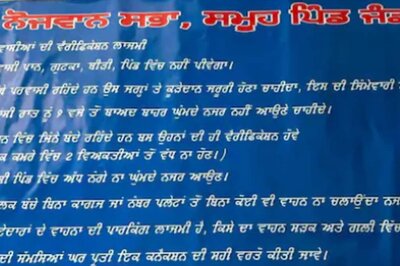
views
THIRUVANANTHAPURAM: Future development of Kerala minus environmental conservation equals zero. It is this formula that has been guiding the various eco clubs in the schools of the State, coming under the National Green Corps initiative. For the 3,500 such eco clubs in schools, two lakh students who are its members and over 5,000 teachers, the handbook with guidelines on activities prepared by the Centre for Environmental Education, Hyderabad, would be a big boon. The Kerala State Council for Science, Technology and Environment (KSCSTE) has now completed the translation of the same for use in schools throughout the State. The book, titled ‘Paristhithi Clubukal Vidyalayangalil’, outlines not just the importance of forming eco clubs in schools, but also guides the reader on how to go about it. It details on the optimum number of members, teachers, how to select students to the club, the governance, sharing of responsibilities among the office-bearers, how to involve parents, how to find time for the activities of the club, where to hold meetings and even the topics that need the urgent attention of the students. While not much of an infrastructure is needed for the functioning of the club, the book talks of binoculars, compass, measuring tape, hand lens, books on birds and animals, camera, maps, drawing and painting equipment, television and slide projectors as aids in understanding nature in a better manner. ‘’Needs of each club may vary according to the various projects undertaken. For example, a club deciding to check the water quality would need special kits for that. Same is the case with air pollution and so on,’’ said Kamalakshan Kokkal, executive editor of the book and also the state nodal officer of the National Green Corps. The section on action plans as well as a guideline for the small projects is a particularly interesting section of the book, which focuses on recycling and reuse of various materials, mapping of water resources, creating and maintaining vegetable gardens, astronomy sessions, biodiversity and conservation of nature. For the older students, explained in the book are projects of a much larger scale and extending beyond the confines of the walls of the schools. They include finding the moisture content and fertility of soil, calculating loss due to erosion of soil, biodiversity of sacred groves, creating a crop calendar, comparison between fallow and fertile lands, calculating the pH of various materials, making compost and vermicompost and so on. The students are also guided on how to carry out bird watching, butterfly watching, diversity of shells, lifecycle pattern and create water table maps. The book even has an activity planner right at the end with space for an activity each week, every month of the year. For more details on the book, contact telephone number 0471-2540085 or e-mail [email protected].















Comments
0 comment